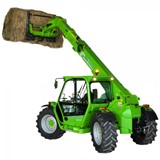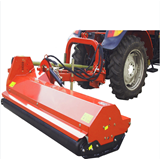With annual rainfall levels sometimes measured by the metre, parts of the Northern Territory, Queensland and Western Australia may seem a natural home for agriculture, rather than drought-hit areas further south.
If nobody uses the water it just flows out to sea, so why waste it?
Over the years there has been much disappointment for those who tried to turn the dream into reality.
In 1954 US millionaire Alan Chase planned the biggest rice-growing region in the world at Humpty Doo, south of Darwin.
His grand plan was to save Asia from starvation and in the process ward off communism.
By 1959 there were 5,500 acres under cultivation, but just six years later the dream was over.
Hungry magpie geese destroyed much of the crop, and other factors including variable rainfall, poor soil and unsuitable drainage were also blamed.
Some saw this as a lesson never to attempt large-scale agriculture in the Top End, but for others it meant it was only a temporary setback.
Federal Opposition finance spokesman Andrew Robb is optimistic about northern agriculture.
He tells reporters that Australia currently produces enough food for 60 million people, but developing the north and other areas could boost that capacity to 120 million in just a few decades.
"You can't do these things in a piecemeal fashion," he says.
He adds that millions of hectares would have vastly improved productivity if they had more water.
Robb says not only could rivers be dammed, but hydro-electric power could be generated, although he will not yet say where the power stations would be.
He blames the Greens for opposing dams in the past, and in the process harming regional communities.
Professor Michael Douglas, an aquatic ecologist at Charles Darwin University in Darwin, sounds sceptical that Robb's hopes will ever come to fruition.
He says northern Australia has among the oldest soils on the planet, which have low fertility.
Most of the rainfall in the north is near the coast, where the land is flat, and dams would be subject to high evaporation, he says.
For decades, assessments about the potential of northern agriculture have been overly optimistic, Professor Douglas says.
"You run the risk of disappointing primary producers," he says.
Prof Douglas points out that floodwaters in the Top End play a crucial role in the life cycle of some fish, which grow their reproductive organs while they feed on the floodplains.
Aboriginal communities also utilise the river resources, and species like long-necked turtles, black bream, barramundi and mullet would be at risk from reduced river flows.
Dr Stuart Blanch from the Environment Centre NT was even more scathing of the Coalition's plan, saying it was "economically flawed and environmentally and culturally disastrous".
NT Chief Minister Paul Henderson pooh-poohed the idea of a northern food bowl, saying the dry season was long and the science was clear.
"Unless you are going to dam major river systems, the dream of broadacre cropping on a very large scale to supply Asian markets is just pie in the sky," he says.
His views are backed by a 2009 government report that found agricultural opportunities in the north were constrained by soil suitability.
Robb contends that report was hijacked by Greens who are hellbent on ensuring rivers are not developed.
Probably the biggest attempt at producing food from Australia's great northern waterways is the Ord River Irrigation Scheme in WA's Kimberley region.
While the scheme has had some success, in 1993 a consultant concluded that in its first 40 years it incurred losses that would equate to $687 million, mostly of public funds.
In 2009 governments invested an extra $415 million in the expansion of Ord Scheme.
Far from being a food bowl, its greatest success has been the production of sandalwood.
Some have quipped that the while not exactly a food bowl, the Ord at least can at least produce lots of bowls.
But Robb tells reporters the coalition wants to push ahead with Stage Three of the Ord River scheme, dramatically increasing the project's size.
He says while the project may have made a loss so far, its success needed to be measured over a much longer time frame.
Once the Ord starts to utilise its potential it will act as an anchor for nearby areas, helping them to develop, he says.
"In 50 to 100 years there will be really major cities across the north," Robb predicts.









